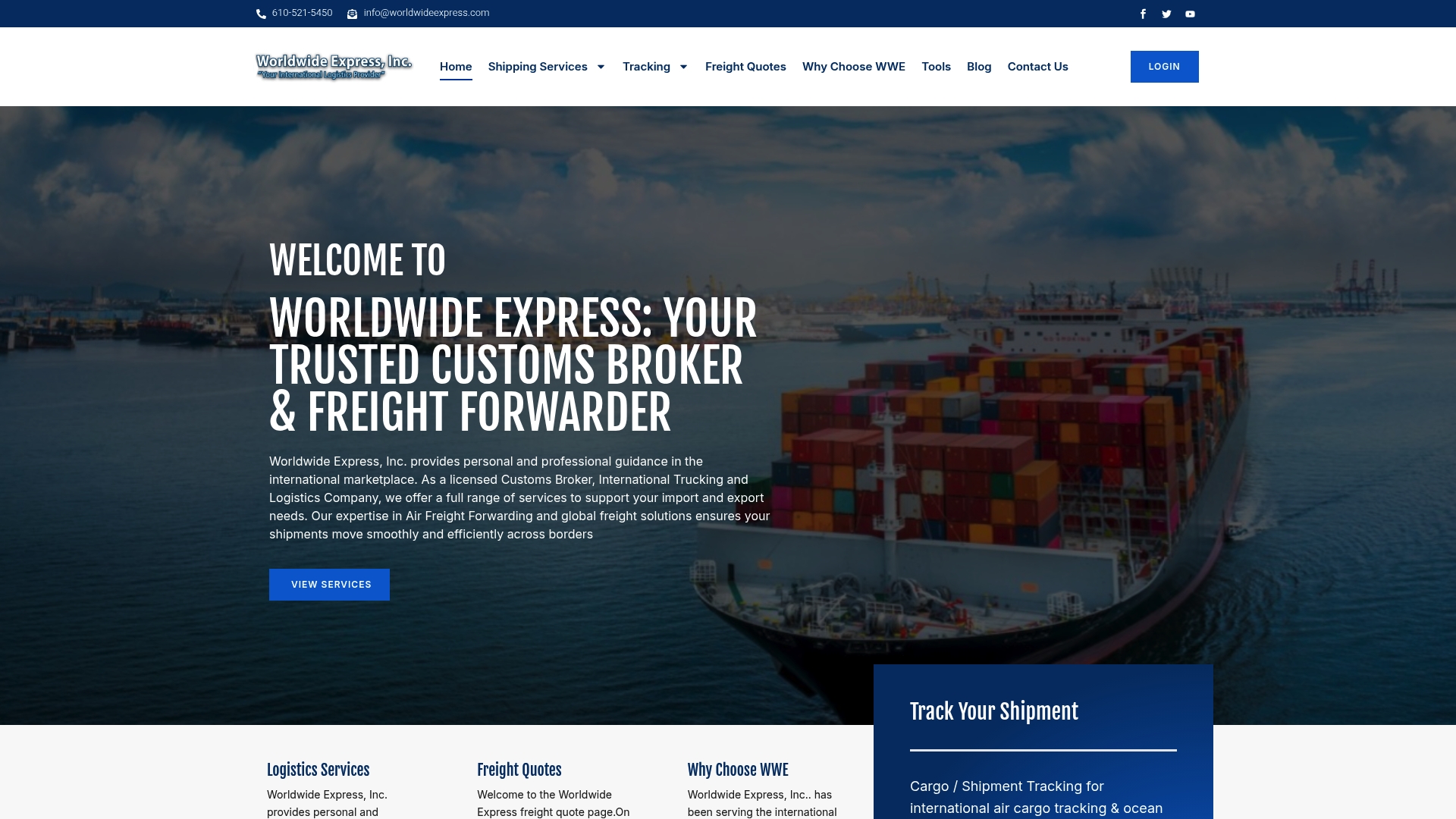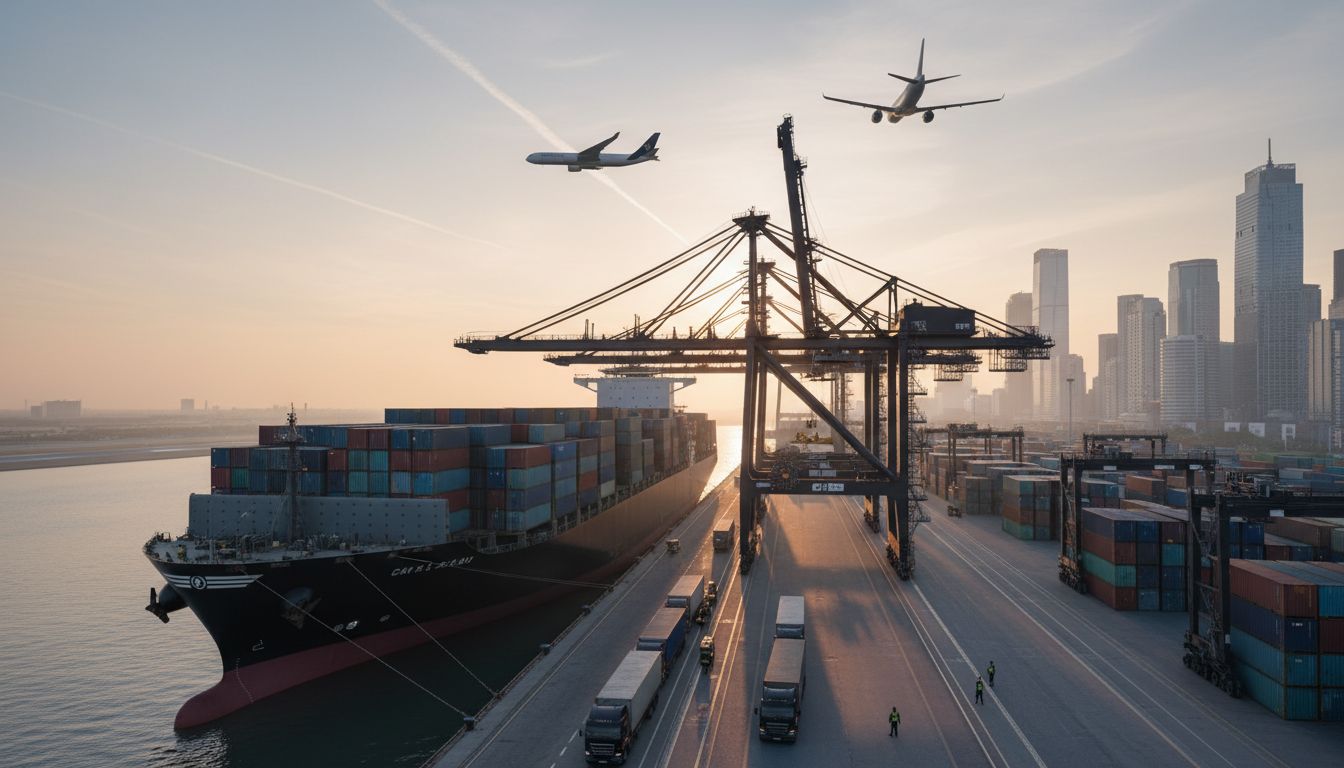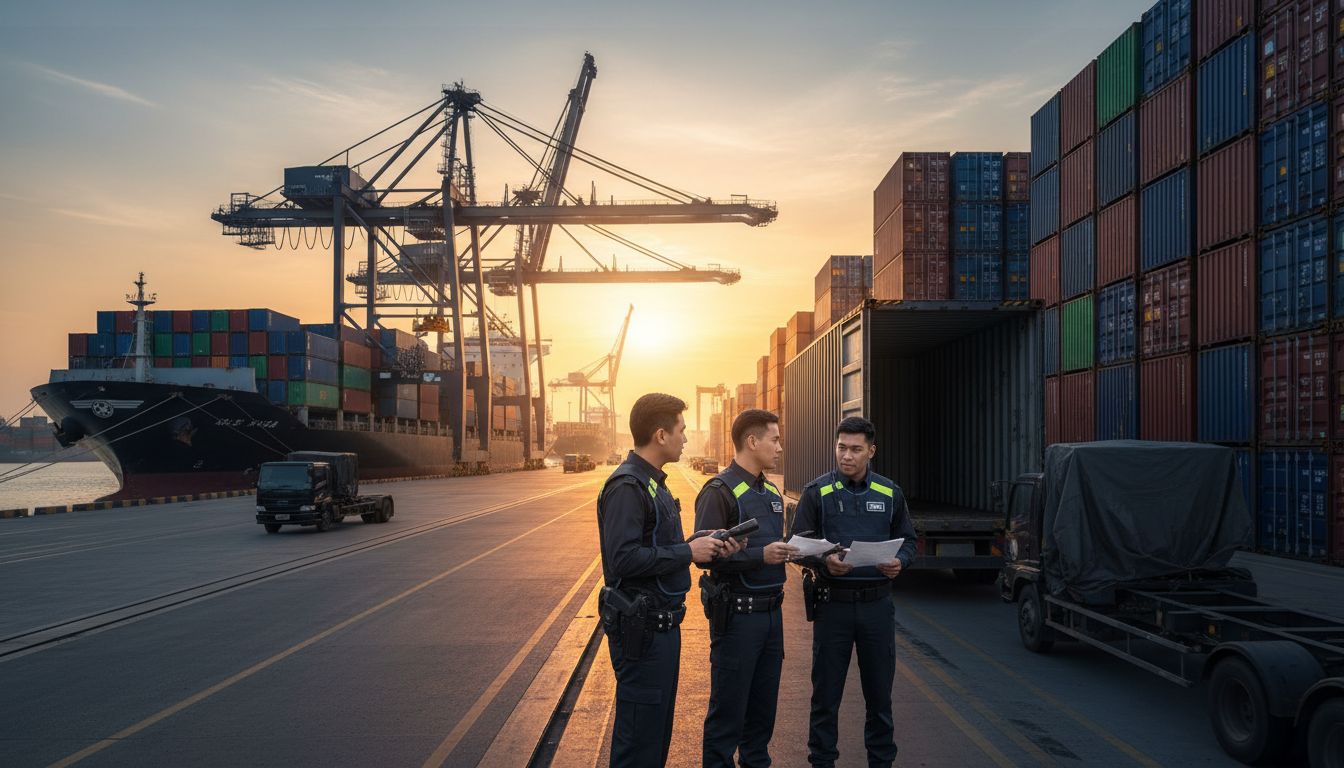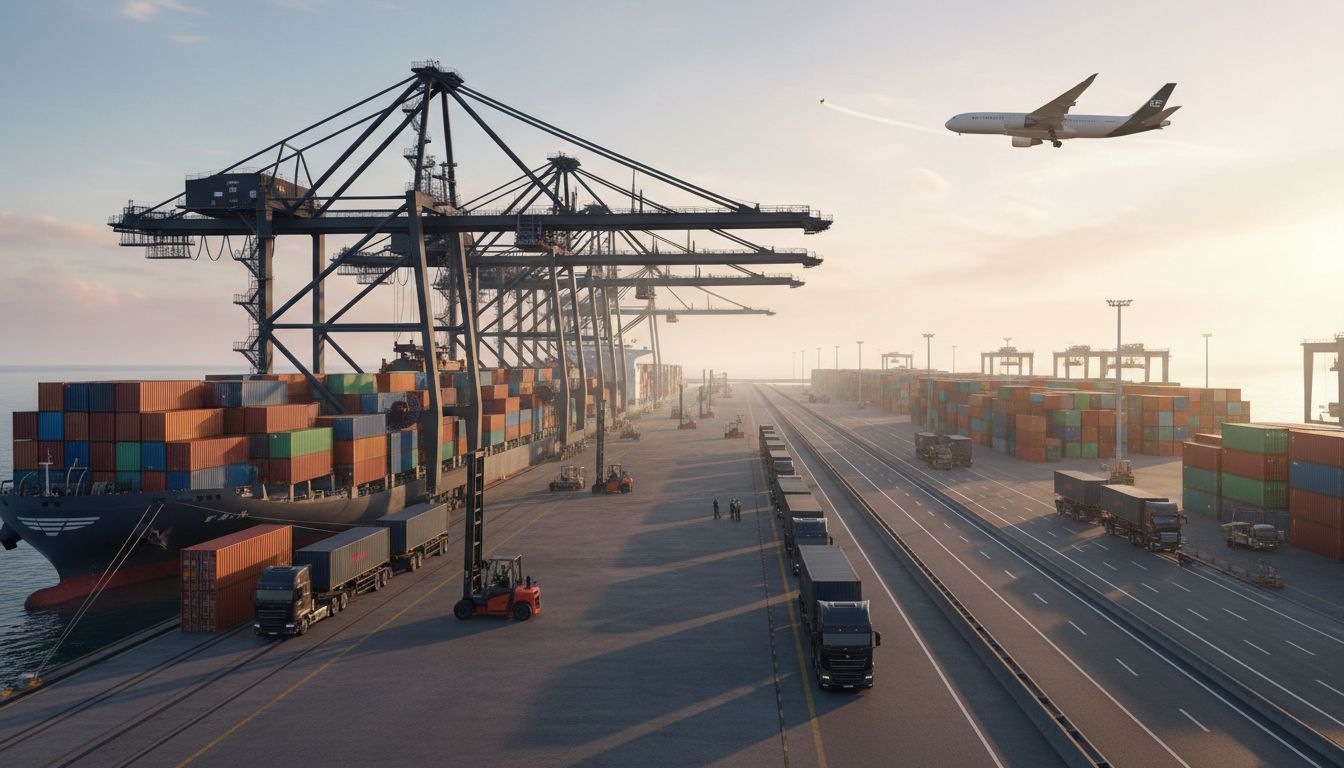Every product crossing a border needs to be tracked, taxed, and approved. Customs entry types decide how that happens for billions of dollars in goods every day. Surprisingly, these classifications do more than just fill out paperwork. Correct customs entry types can actually reduce clearance times by up to 40 percent according to the World Trade Organization. So while most people see them as red tape, they are actually one of the best tools for keeping international trade efficient and secure.
Table of Contents
- Defining Customs Entry Types And Their Importance
- The Role Of Customs Entry Types In International Trade
- Key Customs Entry Types And Their Applications
- How Customs Entry Types Affect Tariffs And Duties
- Navigating Compliance With Customs Entry Types
Quick Summary
| Takeaway | Explanation |
|---|---|
| Understand customs entry types | Different entry types are crucial for declaring goods correctly to customs authorities. |
| Avoid misclassification penalties | Incorrectly classifying goods can lead to financial penalties and shipment delays. |
| Utilize experts for compliance | Engage customs brokers or freight forwarders for navigating complex entry types. |
| Implement robust documentation practices | Accurate documentation is essential for compliance and minimizing risks in international trade. |
| Leverage technology for compliance | Use advanced software to track entries and automate classification processes for better efficiency. |
Defining Customs Entry Types and Their Importance
Customs entry types are critical administrative processes that govern how goods move across international borders, serving as the official documentation and classification mechanism for international trade transactions. These specialized classifications determine the legal, financial, and regulatory requirements for importing and exporting merchandise.
What Are Customs Entry Types?
Customs entry types represent specific categorizations that importers and exporters must utilize when declaring goods to customs authorities. Each entry type corresponds to different scenarios, cargo characteristics, and trading conditions. Understanding the Bill of Entry provides crucial context for comprehending these nuanced classifications.
Key characteristics of customs entry types include:
- Precise identification of goods being imported or exported
- Determination of applicable taxes and duties
- Verification of compliance with regulatory standards
- Establishment of proper documentation requirements
Significance in Global Trade Operations
Customs entry types play a pivotal role in facilitating smooth international trade by providing a standardized framework for cargo declaration. They help governments track cross-border movements, assess appropriate tariffs, and ensure national security and regulatory compliance.
According to World Trade Organization research, proper customs entry classification can reduce clearance times by up to 40% and minimize potential legal complications during international shipping transactions. The precise categorization allows customs officials to quickly assess shipment details, verify documentation accuracy, and process goods efficiently.
Strategic Considerations for Businesses
Businesses engaged in international trade must understand the nuanced differences between various customs entry types to optimize their logistics strategies. Incorrect classification can result in significant financial penalties, shipment delays, and potential legal challenges.
Professional freight forwarders and customs brokers specialize in navigating these complex classifications, helping companies select the most appropriate entry type based on specific shipment characteristics, trade agreements, and regulatory requirements.
The Role of Customs Entry Types in International Trade
Customs entry types function as sophisticated mechanisms that transform complex international trade transactions into standardized, verifiable processes, enabling governments and businesses to manage cross-border merchandise movements with precision and regulatory compliance.
Regulatory Frameworks and Compliance
International trade relies on intricate regulatory frameworks where customs entry types serve as critical communication tools between importers, exporters, and governmental authorities. Understanding customs clearance companies can provide additional insight into how these complex systems operate.
Key regulatory functions of customs entry types include:
- Establishing clear documentation requirements
- Tracking cross-border merchandise movements
- Assessing appropriate tariff structures
- Ensuring national security protocols
Economic and Security Implications
Customs entry types represent more than administrative procedures. They are sophisticated instruments of economic management and national security. According to World Customs Organization research, these classifications help governments:
- Monitor international trade flows
- Protect domestic industries
- Generate accurate revenue collection data
- Prevent illegal goods from entering national territories
Strategic Trade Management
For businesses engaged in international commerce, understanding and correctly applying customs entry types is crucial. These classifications directly impact financial outcomes by determining duty rates, tax obligations, and potential expedited or restricted shipping processes.
Professional logistics experts recognize that precise customs entry type selection can reduce potential delays, minimize financial risks, and streamline international shipping operations. Companies must invest in comprehensive training and technological solutions to navigate these complex regulatory landscapes effectively.
Key Customs Entry Types and Their Applications
Customs entry types represent sophisticated classification systems that enable precise tracking, assessment, and management of international merchandise movements. Each entry type serves a distinct purpose, addressing specific trade scenarios and regulatory requirements.
The following table compares the most common customs entry types, outlining their primary purpose, typical use case, and key compliance requirements.
| Entry Type | Primary Purpose | Typical Use Case | Key Compliance Requirements |
|---|---|---|---|
| Temporary Entry | Allow goods limited entry without full duties | Goods for trade shows or repairs | Return/export within set time; documentation |
| Consumption Entry | Permanent import and immediate use | Goods sold or consumed domestically | Full duty payment; standard declarations |
| Warehouse Entry | Store goods in bonded facilities pre-clearance | Inventory held before sale or distribution | Strict inventory records; customs approval |
| Formal Entry | High-value shipments needing detailed processing | Commercial shipments above value threshold | Detailed paperwork; full compliance checks |

Primary Customs Entry Classifications
The international trade landscape encompasses several critical customs entry types, each designed to accommodate unique shipping circumstances. Understanding customs valuation provides essential context for comprehending these specialized classifications.
The most common customs entry types include:
![]()
- Temporary Entry: Allows goods to enter a country for a limited time without paying full duties
- Consumption Entry: Standard classification for goods intended for permanent import and immediate use
- Warehouse Entry: Permits goods to be stored in approved facilities before final customs processing
- Formal Entry: Required for high-value shipments exceeding specific monetary thresholds
Regulatory Complexity and Documentation
Each customs entry type demands specific documentation and compliance protocols. According to International Trade Administration research, accurate classification is crucial for:
- Determining precise duty rates
- Ensuring regulatory compliance
- Calculating appropriate tax assessments
- Facilitating smooth customs clearance processes
Strategic Implications for Businesses
Selecting the appropriate customs entry type requires strategic planning and comprehensive understanding of international trade regulations. Businesses must consider multiple factors including shipment value, intended use, duration of import, and specific regulatory requirements.
Professional logistics experts emphasize that misclassification can result in significant financial penalties, shipment delays, and potential legal complications. Accurate entry type selection serves as a critical risk management strategy in global trade operations.
This table highlights key strategic considerations for businesses navigating customs entry types, summarizing potential benefits of proper classification and risks associated with errors.
| Consideration | Benefit of Accurate Classification | Risk of Misclassification |
|---|---|---|
| Clearance Speed | Faster processing and reduced delays | Extended processing and shipment delays |
| Financial Impact | Accurate duty calculation and cost savings | Penalties, extra duties, unexpected expenses |
| Legal Compliance | Reduced chance of disputes or investigations | Legal challenges, possible seizures |
| Reputation in Trade | Strong relationships with customs authorities | Damage to business credibility |
How Customs Entry Types Affect Tariffs and Duties
Customs entry types serve as intricate mechanisms that directly influence tariff calculations, duty assessments, and overall financial obligations for businesses engaged in international trade. These classifications create a nuanced framework that determines the precise financial implications of cross-border merchandise movements.
Tariff Determination Mechanisms
Each customs entry type represents a unique pathway for calculating financial responsibilities, with specific rules governing duty assessments. How to pay customs duties provides essential context for understanding these complex financial processes.
Key factors influencing tariff calculations include:
- Merchandise classification code
- Country of origin
- Total shipment value
- Specific entry type selected
- Applicable trade agreements
Financial Implications and Strategic Considerations
Businesses must strategically navigate customs entry types to optimize their financial outcomes. According to World Trade Organization research, different entry types can significantly impact overall import expenses.
Strategic considerations for tariff management include:
- Selecting entry types that minimize duty exposure
- Understanding preferential trade agreement provisions
- Maintaining accurate documentation
- Anticipating potential financial variations
Risk Management and Compliance
Professional logistics experts emphasize that precise entry type selection represents a critical risk management strategy. Incorrect classification can result in substantial financial penalties, unexpected duty assessments, and potential legal complications.
Companies must develop comprehensive understanding of how different customs entry types interact with complex international trade regulations, ensuring they can effectively manage their cross-border financial obligations while maintaining full regulatory compliance.
Navigating Compliance with Customs Entry Types
Customs entry type compliance represents a complex regulatory landscape that demands meticulous attention to detail, comprehensive understanding of international trade regulations, and strategic risk management. Businesses must develop sophisticated approaches to ensure accurate documentation and adherence to evolving governmental requirements.
Regulatory Framework Fundamentals
Successful compliance with customs entry types requires a holistic approach to understanding intricate international trade regulations. Understanding international trade compliance basics offers critical insights into navigating these complex systems.
Key compliance considerations include:
- Maintaining current knowledge of regulatory changes
- Implementing robust internal verification processes
- Developing comprehensive staff training programs
- Establishing clear documentation management protocols
Documentation and Verification Strategies
Accurate documentation serves as the cornerstone of effective customs entry type compliance. According to Government Accountability Office research, organizations must develop systematic approaches to minimize compliance risks.
Critical documentation verification strategies encompass:
- Conducting regular internal audits
- Cross-referencing classification codes
- Verifying origin and valuation documentation
- Implementing multi-level review processes
Technology and Compliance Management
Modern businesses increasingly rely on advanced technological solutions to manage the complexity of customs entry type compliance. Sophisticated software platforms enable real-time tracking, automated classification verification, and comprehensive risk assessment.
Professional logistics experts emphasize that proactive compliance management transcends mere regulatory adherence. It represents a strategic approach to minimizing financial risks, preventing potential legal complications, and maintaining smooth international trade operations.
Simplify Global Trade with Expert Customs Support
Feeling overwhelmed by the complexity of customs entry types and documentation? This article highlights how easily businesses can face financial risks, shipment delays, or compliance penalties if they misclassify entries or miss key regulatory steps. Whether you are managing temporary imports or dealing with intricate warehouse entries, choosing the right approach is critical for smooth international operations.

Make your customs process stress-free with trusted support. The specialists at Worldwide Express, Inc. help you avoid mistakes, speed up clearance, and stay fully compliant with every shipment. Discover how our tailored freight forwarding and international logistics services can solve your customs challenges today. Reach out now and let us move your business forward with confidence.
Frequently Asked Questions
What are customs entry types?
Customs entry types are specific classifications used by importers and exporters to declare goods to customs authorities, determining legal, financial, and regulatory requirements for international trade.
Why are customs entry types important for businesses engaged in global trade?
Customs entry types are crucial for compliance with regulations, efficient customs clearance, and accurate duty assessments, affecting financial outcomes and shipment timelines for businesses.
What are the common types of customs entries?
The most common customs entry types include Temporary Entry, Consumption Entry, Warehouse Entry, and Formal Entry, each serving different purposes and regulatory requirements.
How do customs entry types affect tariffs and duties?
Customs entry types directly influence tariff calculations and duty assessments based on factors like merchandise classification, country of origin, and selected entry type, impacting overall import expenses.






